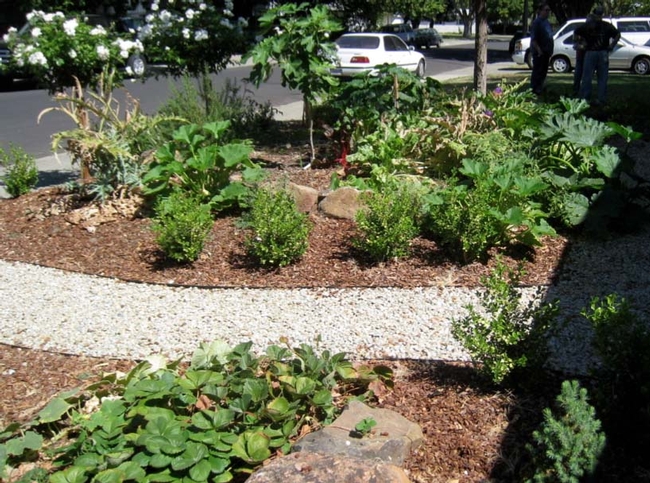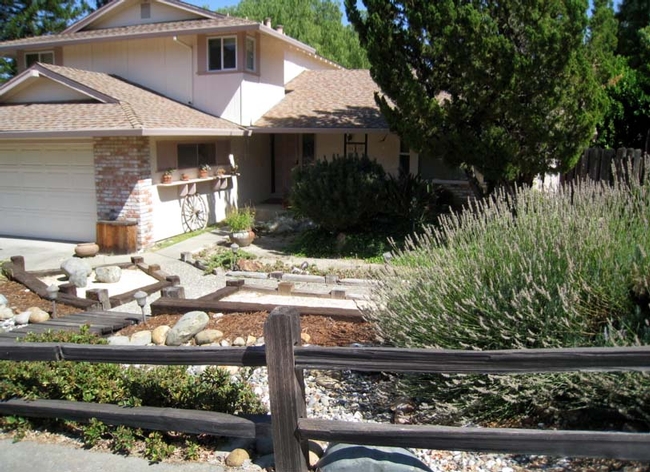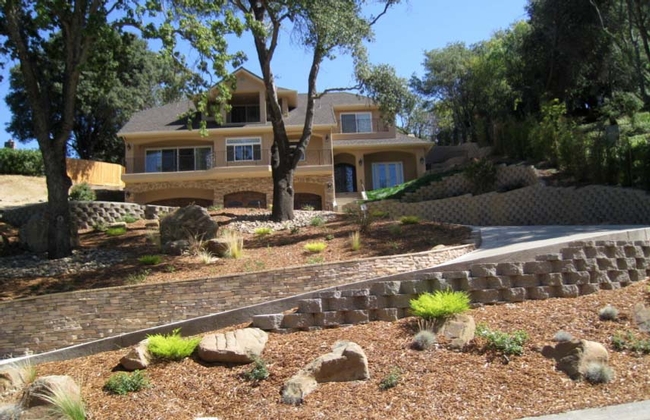So, How About That Lawn?
This is the perfect time of year to think about your lawn. Once the only thing people planted as a front yard ground cover, the lawn is now being seriously re-considered. A lawn takes a lot of care: regular weed control, periodic feeding and, ideally, de-thatching and aerating once a year. If we use chemical fertilizers, pesticides or herbicides on our lawns, there is almost always some run-off that eventually feeds into the San Francisco Bay. Our gas-powered mowers, de-thatchers and aerators contribute pollution to the air we breathe and the electric ones, naturally, use electricity, thereby adding more carbon to the air. Additionally a lawn takes a lot of water.
According to sustainable landscape designer and Cupertino Master Gardener Deva Luna, lawn mowers account for 5% of air pollution in the United States, (I wonder if that includes the weed-eater and the leaf-blower.) and more than 30% of urban fresh water is used to water lawns. Holy cow! That's a lot of water that we may not continue to have available as the population of our state continues to grow, the climate continues to warm, and aquifers are depleted.
With the goal of encouraging wise water usage and a more-healthy, sustainable landscape, Solano County is continuing its Water-Efficient Landscape Rebate program this year. The Solano County Water Agency is again offering residents a rebate of one dollar per square foot of existing lawn removed and replaced with native and drought-tolerant plants on a drip irrigation system. The County is also offering a Bay Friendly Landscape Workshop, planned for September 14th from 10:00 a.m. to 1:00 p.m. Check the website for details. http://www.solanosaveswater.org/Rebates.html
Lawn removal is a pretty big project. Depending on the type of grass you have there may be a variety of approaches. It may involve sod cutting/scraping and smothering; solarizing the soil; sheet mulching; rototilling; or even just pick and shovel labor. If you are interested you can find a nice "how-to" list at fremontlibraries.wordpress.com/2009/06/05how-to-remove-your-lawn.
You can also check out www.bayfriendlycoalition.org/principles for some good reasons to take out that lawn as well as a list of garden professionals in the Bay Area.
In our family we are beginning the process of removing a Bermuda grass lawn and replacing it with appropriate drought-tolerant perennials, perhaps a small deck, a dry creek bed and a swale to catch rainwater, keeping it on the lot. We'll get our first experience with solarization and hope for a nice warm next six weeks to really toast that grass. Easier care, lower water bills and the knowledge that we are making our planet home a little bit more healthy will surely be worth the effort.
Attached are a few pictures of water-wise yards in our area.

Deodara House. (photos by Marian Chmieleski)

Millward House

Wykoff House

